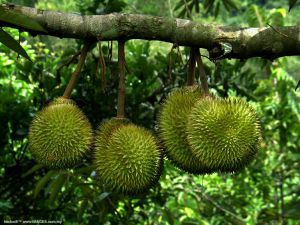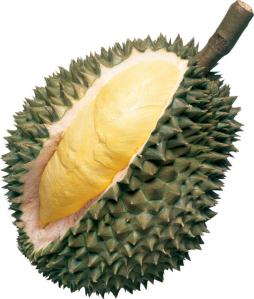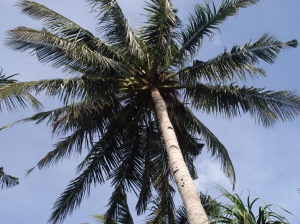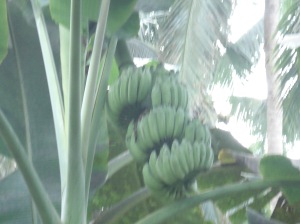Philippine Land Grab – disguised as eco-tourism
Jacques Cousteau the famous explorer and conservationist once described Palawan as the last frontier. For good reason. Here was an archipelago of outstanding natural beauty, and he, more than most, understood that protection was the legacy for future generations.
So how does big businesses, and big property developers, justify their mercenary exploitation of the unspoilt?
To them, natural beauty is a golf course waiting to happen, a resort complex, and an emporium squatted by retail multi-nationals selling designer goods.
They do it by dressing it up as sustainable eco-tourism. The catch all phrase. The tart with a heart. Conservationist capitalism. Mercenary magnanimity. Philippine Profitable Philanthropy.
Ayela Land Inc (ALI) intend to build (purely for altruistic motives of course) a “100-hectare development that shall feature hotels and resorts, tourism and commercial establishments and residential communities with world-class amenities that blend with the natural landscape.”
These are not Cinderella’s, but the ugly sisters which squeeze their feet into jewelled slippers. Convinced that any fit is better than none, and an ounce of blood is worth shedding – even if a scar is the result. After all surely any commercial enterprise which aids the economy is better than none? Right? Wrong!
100 hectares is a substantial chunk of real estate, the first 25 hectares is to become the Lio Beach Village “featuring bed and breakfasts, resorts, shops and dining establishments amid civic spaces” which will be developed by Ten Knots Development Corp, which just happens to be a subsidiary of Ayala Land Inc. (The parent. Keep it in the family!)
This has naturally been lauded and applauded by the Philippines Department of Tourism, whose secretary Ramon R. Jimenez Jr. describes it as “a new jewel of sustainable tourism in the Philippines.” Note the word sustainable – synonymous with ecology and conservation. These are the key words which mask the reality. Cousteau will be turning in his grave.
The problem with the Philippines however is that in a land with over 7000 islands it’s surprisingly difficult to find a free beach. Most pieces of beach, be it white sand, black sand, or volcanic sand is owned by someone, who charge money just for the privilege of sitting on one. A resort takes away the freedom, and more importantly removes the locals. Especially the fisherman, who will no doubt be expected to pay a premium just to sail out and sail in – with a catch or not!
That’s not progress, that is exploitation, and it is ruthless because it has the support of the government, whose raison d’etre is not sustainability or culture, but greed and the fast buck.
You see, resorts are victims of the global economy i.e. how many bangs for the buck! It’s a volatile and precarious business, and when a downturn happens the infrastructure suffers, people lose jobs (non jobs associated with service: rooms, restaurants, etc totally dependant on the number of visitors) and invariably when the bottom falls out, the land is sold on. It’s a downward spiral, which cuts into the very ecology which was promoted in the first place. The land has been raped and the agriculture such as coconut trees, bananas, and most indigenous farming and fishing are lost.
What the Philippines government should be doing, and is always decidedly incapable of, is investment in the people. Ensuring that they have proper sustainable employment, encouraging and maintaining the skills that have been garnered over a thousand years, and if necessary subsidising them, because investing in the people and caring for their greatest asset – the land and the seas around it – will ensure worth, value and ultimately self sufficiency with profits all round. Technology may be the future, but a reputation of being the call-centre capital of South East Asia doesn’t really cut the mustard. Like India it will only exist for cheap labour and the service industry.
UNESCO have been threatening for the past five years that the famed rice terraces of the Cordilleras are losing their integrity and will inevitably lose their status as a world heritage site. The terraces which are unique, have been farmed and maintained by skilled tribal people for over two thousand years. They argue that “the terraced landscape is highly vulnerable because the social equilibrium that existed in the rice terraces for the past two millennia has become profoundly threatened by technological and evolutionary changes. Rural-to-urban migration processes limit the necessary agricultural workforce to maintain the extensive area of terraces.”
In simple English this means that the young generation are not following in their fathers and forebears footprints and heading to Manila to seek their fortune. Between the lines it also says that this “migration” makes the land redundant, cannot be sustained, not fit for purpose and therefore prime targets for commercial land grabbers. If you want to know what that is and the horrors it produces, just go to the city in the sky: Baguio – where concrete is king.
A responsible government should be sustaining it’s heritage, not destroying it systematically for short term financial profit, nor pandering to wealthy developers whose hearts are purely mercenary, and leave a legacy of shame, exploitation and avarice.
It will get worse before it gets better – but time is running out, and it will have probably ran out before the people of the Philippines wake up – perpetually somnambulist – perpetually sleepwalking – and whilst they sleep, the politicians, the investment bankers, the fund managers and the speculators are wide awake – singing, celebrating and dancing obscenely on the land!
Here, Now – A Queen of England and a Philippines President!
I'm not going to talk about the Queen's Diamond Jubilee – the internet is awash with chat about it all, and I have nothing to add…yet!
My attention has been drawn to some other news: on the evening when there was a brilliant Jubilee concert at Buckingham Palace, President Aquino of the Philippines was due in London to begin a three day official visit and promote his country's tourist slogan "It's more fun in the Philippines".
The Philippines – Keep off my Buko – Vita Coco!
"I'm not a mathematical genius, but I know about coconuts, and I know that the average young coconut holds less than a litre of water – but let's suppose, for argument sake it actually does hold a litre."
The Coconut Market Information Center (CMIC) states that Vita Coco "the US best-selling coconut juice brand" has partnered with the Philippines company AgriNurture Inc (ANI) to build a new coconut juice production facility in Camarines Sur.
This $5m facility will have an eventual output capacity of 36 million litres of juice each year. Notice the change in definition – not water but juice.
The Seven Year Itch………..
There are 320 million coconut trees in the Philippines and they occupy 28% of the agricultural land area.
Yet 14% of them are considered dead or dying and there has not been any substantial replacement. That's nearly 45 million.
A 60 year old tree won't bear many nuts and should be cut down for lumber. A tree (or palm – for the pedantic) is at its best between seven and twenty five years when they can produce 40 to 60 nuts a year.
Sustainable agri-management would ensure replacements but farmers are reluctant due to a combination of poor returns, El Nino weather patterns, and many are poor tenants who don't own their land and are paid peanuts by the land owners who even expect rent to boot!
Coconut Water (part 3) and Begnino Aquino (III)
Philippines President Binigno Aquino III was in the US earlier this week and during the course of his visit he received a surprise four-year investment pledge for his country's coconut industry.
The deal, worth $15million, was proposed by a string of American executives who queued up to visit him at his hotel. Guess who some of these were? Pepsi and Vita Coco to name just two.
Coconut Water (part 2)…
Followers of this blog will be aware that I have a bee in my bonnet about coconut water.
I wrote a Wizzley page about it recently, which has garnered substantial interest.
Meanwhile I was looking at my Squidoo lens on coconut harvesting and saw a Google adsense link to coconut water. I clicked on it out of curiosity and it brought me to a UK company selling the magic nectar.
"Coconutty" says in their blurb "There’s a revolution happening – from Madonna to Rihanna, from marathon runners to premier league football teams, coconut water is now becoming mainstream. More and more people are opening their minds and mouths to the incredible hydration of pure coconut water. Once the secret of the tropics, coconut water is now being embraced everywhere as the new sports drink of choice."
Coconut Water – 1100 good reasons to think about…..
 Coconut water is taking off in a big way, especially since major celebrities have discovered it's isotonic benefits.
Coconut water is taking off in a big way, especially since major celebrities have discovered it's isotonic benefits.
Indeed Madonna recently invested $1.5m into Vita Coco – one of the big players in this market – and has even hired Rihanna to be the company's global face.
Both Coca Cola and Pepsi have invested considerably in the drink, which they see as the new wonder tonic for today's lifestyles.
Whilst it's true it has some commendable properties – most natural products do – some of the claims are widely excessive, from a remedy for hangovers to curing cancer.
Coconut water can only come from young coconut (known as buko in the Philippines), and not to be confused with coconut milk, which develops as the nut ages. I can personally vouch for it's refreshing qualities as I have often sipped the nectar in moderation because imbibed in excess it becomes not only a diuretic but also a laxative (so best keep the Imodium on standby). I wonder if this could account for Rihanna's gyratory dance routines?
Yet, this is not simply a manufactured drink with flavourings and carbonated water that can be easily produced in a factory. It is a natural product that needs a tree, which in turn requires land.
Before anyone can say "well, surely the same argument can be addressed to orange juice", my answer is no it can't, because an orange is an orange like a mango is a mango. A coconut however needs to grow through various stages, and each stage is an important development in its cycle – hence the phrase "the tree of life".
But it's horses for courses and although there are no evident environmental signs that plantations designated for young coconut alone can be detrimental, it seems like a terrible waste of a fruit.
Young coconut husk is difficult to dispose of and not easily biodegradable. The husk is rendered useless, copra cannot be produced, coir (a valuable fertilizer) cannot be garnered, and the very tender almost translucent meat cannot be dessicated or made into oil. It also has limited export potential. Indeed, the young coconut, bar it's frugal water content, is really good for nothing. Tourists love them of course, and beach hotels and bars offer them as the ultimate tropical drink for their sun-soaked visitors. The novelty being that they actually drink from the nut.
It requires 10,000 nuts for 2,000 litres of coconut water or 5 nuts for one litre. That's alot of wastage. Yet it's also a lot of profit for companies owning their own plantations (Pepsi for example) or those who have invested in the plant and machinery, or just the middle men and marketeers – but how are the small independent growers fairing, and are they paid a decent price for their nuts? Now that's a question I never thought I would ask!
None of the big three mentioned above are endorsing their products as fair trade or even organic. In the UK a litre carton of coconut water is retailing for £2.99 – one wonders how much of that is returned to the primary source?
The above figures equate to £0.60p or $0.97c per nut – lets say a dollar. In the Philippines 40% of the population are struggling to live on that every day.
Although I'm not involved in this business, I can sell a young coconut straight from the tree for 5 pesos (£0.07p) – by the time it was juiced, packaged, transported and retailed to the UK it would have been marked up 1100%.
I suspect that many small producers are being paid much less (by volume), because the big boys apply leverage and purchasing power, just like the supermarkets do in their own dealings with farmers and growers regardless of crop.
Is it any wonder then that plantation after plantation from India to Brazil are growing young coconuts on an industrial scale and only for their water?
Anyway, next time any of you have a sip of the stirring stuff, think about the nut who grew the nut. One of them might have been me!
Durian – A patient fruit……
I was delighted to learn today that my Durian tree in the Philippines is now bearing fruit since first planted seven years ago.
 Being bordered on each side with magnificent trees such as the Durian and Mango takes patience and loving care, although the Mango tree has been a fixture for well over twice as long and developed into a most majestic and aesthetic friend.
Being bordered on each side with magnificent trees such as the Durian and Mango takes patience and loving care, although the Mango tree has been a fixture for well over twice as long and developed into a most majestic and aesthetic friend.
The Durian fruit has the distinction of smelling like hell and tasting like heaven. Yet this exceptional fruit is highly regarded the world over, and for those in the know, nothing compares to it.
Whilst also native to Indonesia and Malaysia, its roots are abundant in Mindanao in the Southern Philippines and typically take three to five years to reach fruition. It's great news that in Laguna, several hundred miles further north, the Durian has succeeded, albeit a few years longer than the norm. It's even better news that its thriving on my own little patch. I stand akimbo (smuggly)!
Often regarded as the king of fruits, highly prized and commanding a significant price, the Victorian British Naturalist Alfred Russel Wallace described its flesh as "a rich custard highly flavoured with almonds". Unfortunately such is its pungency it engenders feelings ranging from joy to disgust, and is not on the menu of some sensitive hotels.

For size and shape think of a spiky rugby ball or a Jackfruit, which incidentally also has a tendency to pong.
Thailand is particularly taken with the fruit and exports it with abundance. It will be celebrating it's annual World Durian Festival between the 1st and 9th May in Chanthaburi. According to the Thai Gov website it sounds like a barrel of fun and is a major tourist attraction.
I won't be attending, but I am comforted in the knowledge that I now have my own supply. Patience is a virtue, and seven years certainly demonstrates patience in abundance.
Durian, Mango, Papaya, Coconut, Rambutan, Banana, Lanzones (yes – those too!), and jackfruit, are just a few of the tropical fruits which I now harvest and find great joy.
I shall blog about them in the future – but please be patient!
The Amazing Coconut
A recent article in National Geographic bestowed the virtues of coconut coir fibre as a growing aid, similar to compost. I discovered this use some time ago.
Wandering around the coconut groves around my home in the Philippines, it is common to see small hills of coconut shell just slowly smoking away. They are the residue after every harvest. Most of it becomes charcoal, and is a principle source of fuel for cooking.
However the coir fibres, from the hairy husks which are used in matting and brushes etc, can be used in horticulture.
Around every forty days there is a coconut harvest. Not every nut on a tree will be ready for harvesting. The average tree in one harvest could yeald half a dozen.  They will not fall to the ground unaided, contrary to what exotic advertising proclaims, unless they are very old, but must be taken at source.
They will not fall to the ground unaided, contrary to what exotic advertising proclaims, unless they are very old, but must be taken at source.
This could involve someone agile climbing up the trunk, but more often than not, he will have a a very long bamboo pole with a scythe on the end, to slice the nut from its root.
The nut will be large and green. It will then have it’s outer shell removed using a most vicious looking spike, which sits on the ground and is supported by the harvesters knees for stability. These guys are very adept at removing the husk, and make it look extremely simple, even though it is quite dangerous.
In every batch of nuts harvested from one tree, perhaps two at most are extremely special. In the Philippines these are called Macapuno. They are a most prized nut, and used for delicacies and cosmetics. A Macapuno will be worth twice as much as an ordinary nut.
As all coconuts look the same after the external husk is removed, the only way to determine one from the other is by tapping or flicking a finger forcibly upon it. It took a great deal of practice for me to get this right. Tapping will indicate a certain density and sound, so a good sensitive reaction is essential. The harvesters will identify them instantly, and then separate them from the others.
Sometimes a nut will be harvested a little earlier. Young coconut or Buko, is nectar to drink, and the internal flesh is soft, smooth, and melts in the mouth.
The Coconut tree is regarded as the tree of life. It can live for 100 years. Unfortunately tropical storms can be the death knell of good healthy trees, so proper management is crucial through continuous planting to ensure ongoing supply.
Because the trees grow so tall, it is very common to see banana trees around them, together with other fruit trees such as papaya, mango, and rambutan. Rambutan, a bit like a hairy kiwi fruit, has a wide branch spread, and care has to be taken when planting.
Often a tree is “castrated” in such a way that they will not bear any fruit, but the juices are extracted and fermented, creating a very potent alcholic drink, known as lambanog.
The next time you drink Malibu, you now know were the base spirit comes from!
But back to the coir. I was very interested at one stage to develop the coir for export, and after writing to the Royal Botanical Gardens at Kew in West London, I was invited to see how they used it.
They had sackfulls of the stuff, the size of paladins which they imported from Sri Lanka, all of different grades, and the gardeners were full of praise for the commodity.
I spent a most enjoyable morning there, and whilst I was grateful for the time they spent with me, and the education I had received, I left knowing that the investment required to make this product was just too huge for me at the time. It is also a very labour intensive operation.
I still think about it today, indeed, I regard myself as an authority on the subject now; but for sure, it’s not something I will be pursuing in my retirement.
Maybe someone will come along one day and just buy the husks from me! Meanwhile, there are stacks of coconut charcoal which is bagged often and sold at market!
That’s something else which has to be done quickly. Due to the climate – soggy charcoal will not cook the spare ribs and kebabs!








